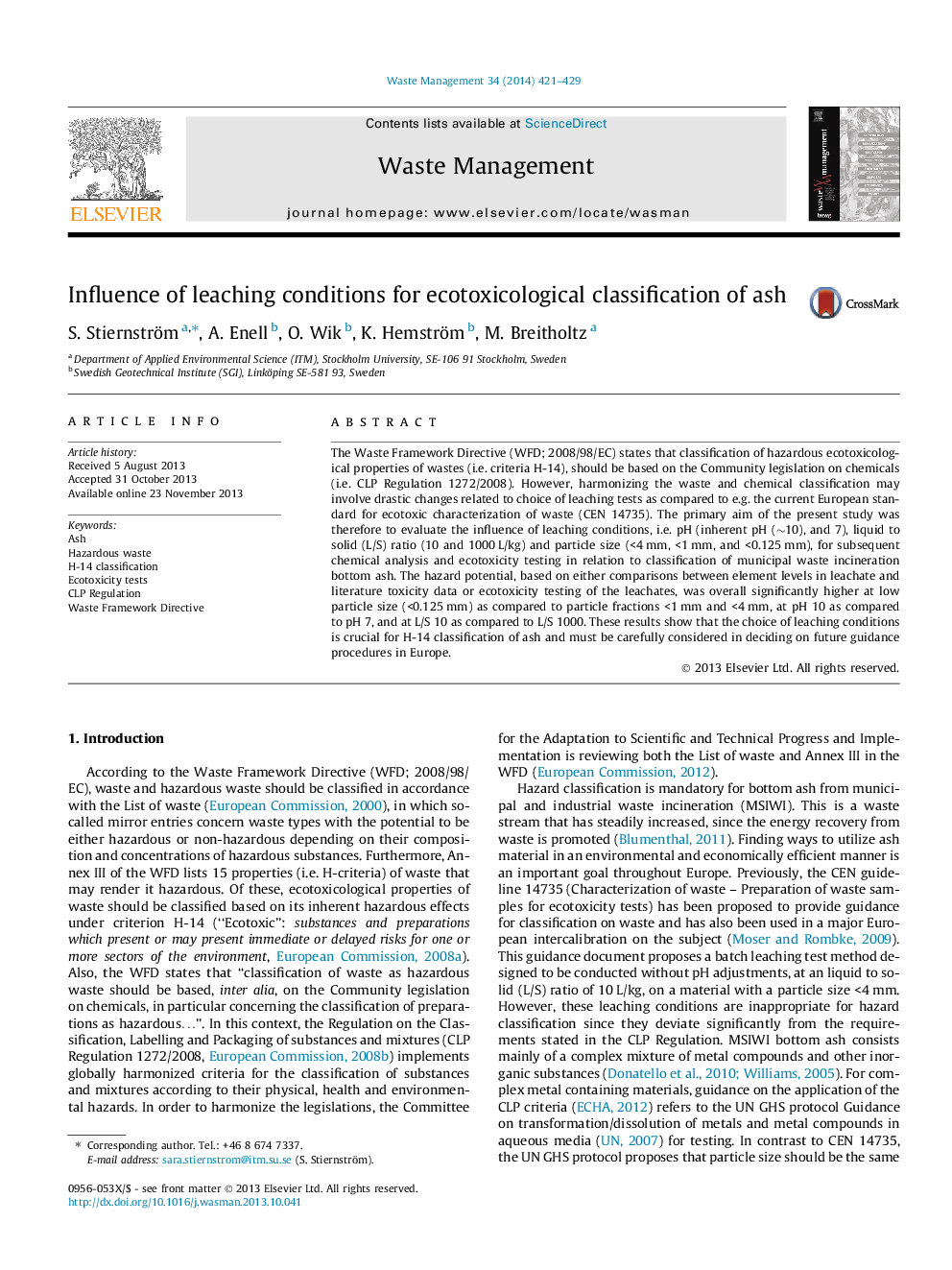| Article ID | Journal | Published Year | Pages | File Type |
|---|---|---|---|---|
| 6355181 | Waste Management | 2014 | 9 Pages |
Abstract
The Waste Framework Directive (WFD; 2008/98/EC) states that classification of hazardous ecotoxicological properties of wastes (i.e. criteria H-14), should be based on the Community legislation on chemicals (i.e. CLP Regulation 1272/2008). However, harmonizing the waste and chemical classification may involve drastic changes related to choice of leaching tests as compared to e.g. the current European standard for ecotoxic characterization of waste (CEN 14735). The primary aim of the present study was therefore to evaluate the influence of leaching conditions, i.e. pH (inherent pH (â¼10), and 7), liquid to solid (L/S) ratio (10 and 1000Â L/kg) and particle size (<4Â mm, <1Â mm, and <0.125Â mm), for subsequent chemical analysis and ecotoxicity testing in relation to classification of municipal waste incineration bottom ash. The hazard potential, based on either comparisons between element levels in leachate and literature toxicity data or ecotoxicity testing of the leachates, was overall significantly higher at low particle size (<0.125Â mm) as compared to particle fractions <1Â mm and <4Â mm, at pH 10 as compared to pH 7, and at L/S 10 as compared to L/S 1000. These results show that the choice of leaching conditions is crucial for H-14 classification of ash and must be carefully considered in deciding on future guidance procedures in Europe.
Related Topics
Physical Sciences and Engineering
Earth and Planetary Sciences
Geotechnical Engineering and Engineering Geology
Authors
S. Stiernström, A. Enell, O. Wik, K. Hemström, M. Breitholtz,
